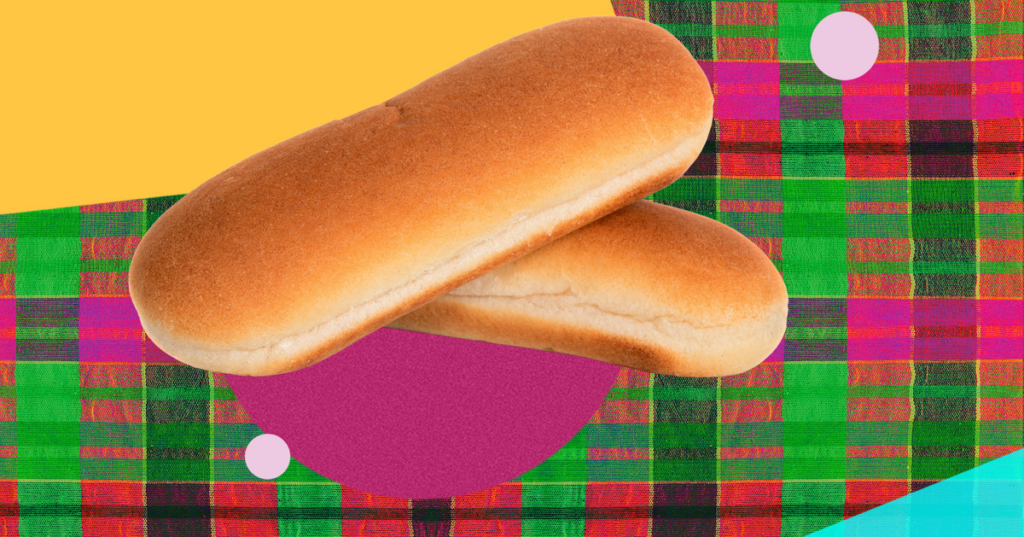Filed under:
Turn your backyard barbecue leftovers into entirely new meals of fried rice, French toast, and more
If you buy something from an Eater link, Vox Media may earn a commission. See our ethics policy.
It is the curse of the backyard barbecue: the ratio of hot dogs to buns is always off. By the end of the evening, you’re either left with a plastic package of sweaty dogs or a dozen buns with no dogs in sight. There is no in between.
Thankfully, there are creative methods for getting through a stack of leftover hot dogs and buns that doesn’t require buying more of either ingredient — and will still result in a satisfying meal or snack.
Tony Fragogiannis, the founder of the Brooklyn Hot Dog Co., is always equipped with franks, but acknowledges that eating them only in a bun can get a little boring. “I think that hot dogs are very versatile and underutilized besides their most common purpose,” he says. His favorite way to repurpose hot dogs is at breakfast, either alongside eggs or in a breakfast bake. He’s far from alone in this preference — scrambled eggs and hot dogs, or huevos con salchicha, is a common breakfast across Mexico that can be spruced up with the addition of sliced peppers or cheese. You can also wrap hot dogs in pancake batter for a breakfast version of a corn dog that strikes both sweet and savory notes.
Because Brooklyn Hot Dog Co. sells a variety of flavored hot dogs, Fragogiannis has also gotten more creative with their alternative uses. “We have a buffalo chicken varietal that is great in dips,” he says. “And a gyro one I like to split open and sear it in a pan, so all the herbs start activating and you can make your own gyro.”
These non-traditional uses may resonate with anyone who grew up in an immigrant household: in my own house growing up, we rarely used hot dogs in their standard bun format. Instead, they were a cheap protein to add to woks of fried rice or served alongside runny eggs at breakfast. My mom always had hot dogs, or salty cocktail sausages, in the fridge for these quick meals.
In fact, in Thailand there is a dish called American fried rice, composed of ketchup fried rice with chopped hot dogs and, occasionally, a fried chicken drumstick. “We used to have American fried rice on the menu of Chao Krung,” says Amanda Maneesilasan, the chef and second-generation owner of Los Angeles’s oldest Thai restaurant. Although it feels like a stereotype of what Americans may want in fried rice, Maneesilasan notes that the dish was very popular at the restaurant in the ’70s, when there were only 5,000 Thais living in the U.S. and the cuisine was still unfamiliar to Americans. “For me and my family, it was hard to have a menu of curries because [guests] wouldn’t order it,” she explains. “One thing that stood out was our fried rice with sausages. It wasn’t the best flavor but it was comfort food.”
Elsewhere in the world, hot dogs have found their way into cuisines wherever an American military presence existed. Consider, for example, Korean army stew, a spicy instant ramen soup that features sliced hot dogs and Spam; Filipino spaghetti, a banana ketchup-based pasta that can be found at the Filipino fast food chain Jollibee; and Japanese napolitan, another ketchup-and-hot dog pasta invented after World War II.
But if you’re looking for something that hews most closely to the hot dog-bun format, you can always follow the simplest route for leftover hot dogs: pigs in a blanket.
Although buns may feel like a surprising vehicle for dessert, Maneesilasan has fond memories of ice cream sundaes scooped into hot dog buns during her childhood in Thailand. “It’s essentially an ice cream sandwich,” she says, “a real ice cream sandwich.” The sundae begins with scoops of coconut ice cream on the fluffy buns, followed by layers of toppings like sweetened sticky rice, crispy mung beans, and toasted peanuts. Maneesilasan has brought this memory to life at her newest venture, Ban Ban Burger, but swaps out the hot dog bun for Japanese milk bread. “When the bread soaks in the evaporated milk, you’re able to taste everything,” she says. “There’s so much texture.”
For Fragogiannis, buns are easier to approach as leftovers. “You can do a french toast with leftover buns,” he says, sticking with his breakfast theme, “or even a bread pudding if you had a ton left over.”
There are savory options, too, like spreading the halves of the bun with garlic butter for easy garlic bread, or toasting any stale buns until they’re dehydrated and crunchy for salad croutons. Fragogiannis also uses the buns for sandwiches — meatball subs, cold cuts, and ham and cheese are all fair game. “At the end of the day, it’s bread,” he says. “It’s very versatile.”
Highlighting the people, products, and trends inspiring how we cook now
Check your inbox for a welcome email.
Oops. Something went wrong. Please enter a valid email and try again.
The freshest news from the food world every day
Check your inbox for a welcome email.
Oops. Something went wrong. Please enter a valid email and try again.

